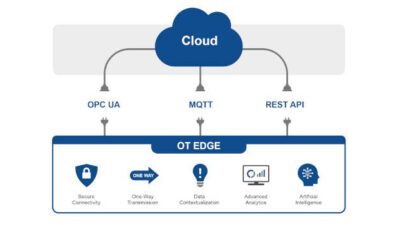At OSI International Foods GmbH, a program of server and storage virtualization is optimizing capacity utilization without the need for a dedicated IT staff at the company’s locations around Europe. Beginning with the European headquarters in Günzburg, Germany, the plan now is for a rollout across parent company OSI’s subsidiaries worldwide, commencing with its entire European operations.
At OSI International Foods GmbH , a program of server and storage virtualization is optimizing capacity utilization without the need for a dedicated IT staff at the company’s locations around Europe. Beginning with the European headquarters in Günzburg, Germany, the plan now is for a rollout across parent company OSI’s subsidiaries worldwide, commencing with its entire European operations.
Of particular note is the storage virtualization aspect of the program, says Robert Ondrus, group manager of IT, and European CIO. Instead of the more conventional storage array, DataCore ’s SANmelody disk server software will be used in conjunction with a Hewlett-Packard server. “We’re getting a high-end storage array functionality for around one-half to two-thirds of the cost of a midrange storage array,” he says.
American-owned OSI International Foods makes items like chicken nuggets and burgers for McDonald’s, Kraft, Tesco, Metro, and Hard Rock Cafe, among others, explains Ondrus. McDonald’s is one of OSI International’s largest customers, and, in fact, the Günzburg headquarters contains a beef and pork product plant chiefly producing for the fast-food chain. Other plants—typically employing 20 to 150 employees—are located in Austria, Poland, Russia, Ukraine, Spain, and the U.K., with only the U.K., Germany, and Ukraine plants holding dedicated IT personnel.
Microsoft Dynamics NAV (formerly Microsoft Navision) is the company’s ERP system of choice, with some 17 separate instances of NAV currently running—one for each of the European national operating or sales companies. The Günzburg headquarters provides central financial, administrative, and IT services for the European subsidiaries, explains Ondrus, and was a logical point from which to commence the server and storage virtualization rollout. KUMAtronik , a systems house based in Augsburg, Germany, provided solution selection advice and implementation support.
“Decentralized storage solutions are less efficient in the midsize enterprise,” observes Klaus Späth, KUMAtronik project manager. “Correctly allocating available disk space between servers is an ongoing juggling act.” However, adds Ondrus, “To overcome the issue of not having dedicated IT personnel at many production locations, we needed a solution that was easy to administer.”
Centrally managed at Günzburg, Ondrus explains, the DataCore solution “has not only solved our immediate capacity problem, but has well prepared us for future requirements.”
From a technology perspective, a significant reason behind the decision use DataCore was SANmelody’s inbuilt synchronous mirroring, auto-failover and thin provisioning capabilities—thus enabling OSI to optimize disk utilization. In addition, DataCore’s intelligent caching technology showed an immediate performance improvement in terms of response times experienced by users of the Navision ERP system.
But the cost-benefit aspect of the DataCore solution was just as appealing. DataCore’s storage virtualization software fundamentally changes the economics of managing storage, says DataCore European Operations Director Nick Broadbent, through leveraging innovative software to combine advanced storage functionality with the agility and savings offered by hardware independence.
Typically deployed on large servers from Dell, IBM or Hewlett-Packard, DataCore’s disk server software runs on platforms as diverse as Windows, UNIX, Linux, VMware, MacOS, and NetWare. “Storage arrays typically cost [euros] 65,000 to [euros] 80,000,” says Broadbent. “Coupled to an industry-standard server, our software is a substantially cheaper alternative.”
First rolled out within OSI’s European operations, it’s a recipe destined for broader consumption within the 12,000-employee company’s global operations.



